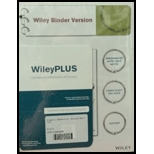
(a)
Interpretation:
To predict the bond angles for all bonds in given set of compounds.
Concept introduction:
Bond angle is angle formed by two adjacent bonds in a compound. The bond angle is determined by the geometry of the atoms present in the compound. The hybridization present in the atom determines the bond angle, namely
To determine: The bond angle present in all bonds of the given compound
(b)
Interpretation:
To predict the bond angles for all bonds in given set of compounds.
Concept introduction:
Bond angle is angle formed by two adjacent bonds in a compound. The bond angle is determined by the geometry of the atoms present in the compound. The hybridization present in the atom determines the bond angle, namely
To determine: The bond angle present in all bonds of the given compound
(c)
Interpretation:
To predict the bond angles for all bonds in given set of compounds.
Concept introduction:
Bond angle is angle formed by two adjacent bonds in a compound. The bond angle is determined by the geometry of the atoms present in the compound. The hybridization present in the atom determines the bond angle, namely
To determine: The bond angle present in all bonds of the given compound
(d)
Interpretation:
To predict the bond angles for all bonds in given set of compounds.
Concept introduction:
Bond angle is angle formed by two adjacent bonds in a compound. The bond angle is determined by the geometry of the atoms present in the compound. The hybridization present in the atom determines the bond angle, namely
To determine: The bond angle present in all bonds of the given compound
(e)
Interpretation:
To predict the bond angles for all bonds in given set of compounds.
Concept introduction:
Bond angle is angle formed by two adjacent bonds in a compound. The bond angle is determined by the geometry of the atoms present in the compound. The hybridization present in the atom determines the bond angle, namely
To determine: The bond angle present in all bonds of the given compound
(f)
Interpretation:
To predict the bond angles for all bonds in given set of compounds.
Concept introduction:
Bond angle is angle formed by two adjacent bonds in a compound. The bond angle is determined by the geometry of the atoms present in the compound. The hybridization present in the atom determines the bond angle, namely
To determine: The bond angle present in all bonds of the given compound
(g)
Interpretation:
To predict the bond angles for all bonds in given set of compounds.
Concept introduction:
Bond angle is angle formed by two adjacent bonds in a compound. The bond angle is determined by the geometry of the atoms present in the compound. The hybridization present in the atom determines the bond angle, namely
To determine: The bond angle present in all bonds of the given compound
(h)
Interpretation:
To predict the bond angles for all bonds in given set of compounds.
Concept introduction:
Bond angle is angle formed by two adjacent bonds in a compound. The bond angle is determined by the geometry of the atoms present in the compound. The hybridization present in the atom determines the bond angle, namely
To determine: The bond angle present in all bonds of the given compound
Want to see the full answer?
Check out a sample textbook solution
Chapter 1 Solutions
Organic Chemistry 2nd Edition Binder Ready Version with WileyPLUS Card Set (Wiley Plus Products)
 ChemistryChemistryISBN:9781305957404Author:Steven S. Zumdahl, Susan A. Zumdahl, Donald J. DeCostePublisher:Cengage Learning
ChemistryChemistryISBN:9781305957404Author:Steven S. Zumdahl, Susan A. Zumdahl, Donald J. DeCostePublisher:Cengage Learning ChemistryChemistryISBN:9781259911156Author:Raymond Chang Dr., Jason Overby ProfessorPublisher:McGraw-Hill Education
ChemistryChemistryISBN:9781259911156Author:Raymond Chang Dr., Jason Overby ProfessorPublisher:McGraw-Hill Education Principles of Instrumental AnalysisChemistryISBN:9781305577213Author:Douglas A. Skoog, F. James Holler, Stanley R. CrouchPublisher:Cengage Learning
Principles of Instrumental AnalysisChemistryISBN:9781305577213Author:Douglas A. Skoog, F. James Holler, Stanley R. CrouchPublisher:Cengage Learning Organic ChemistryChemistryISBN:9780078021558Author:Janice Gorzynski Smith Dr.Publisher:McGraw-Hill Education
Organic ChemistryChemistryISBN:9780078021558Author:Janice Gorzynski Smith Dr.Publisher:McGraw-Hill Education Chemistry: Principles and ReactionsChemistryISBN:9781305079373Author:William L. Masterton, Cecile N. HurleyPublisher:Cengage Learning
Chemistry: Principles and ReactionsChemistryISBN:9781305079373Author:William L. Masterton, Cecile N. HurleyPublisher:Cengage Learning Elementary Principles of Chemical Processes, Bind...ChemistryISBN:9781118431221Author:Richard M. Felder, Ronald W. Rousseau, Lisa G. BullardPublisher:WILEY
Elementary Principles of Chemical Processes, Bind...ChemistryISBN:9781118431221Author:Richard M. Felder, Ronald W. Rousseau, Lisa G. BullardPublisher:WILEY





